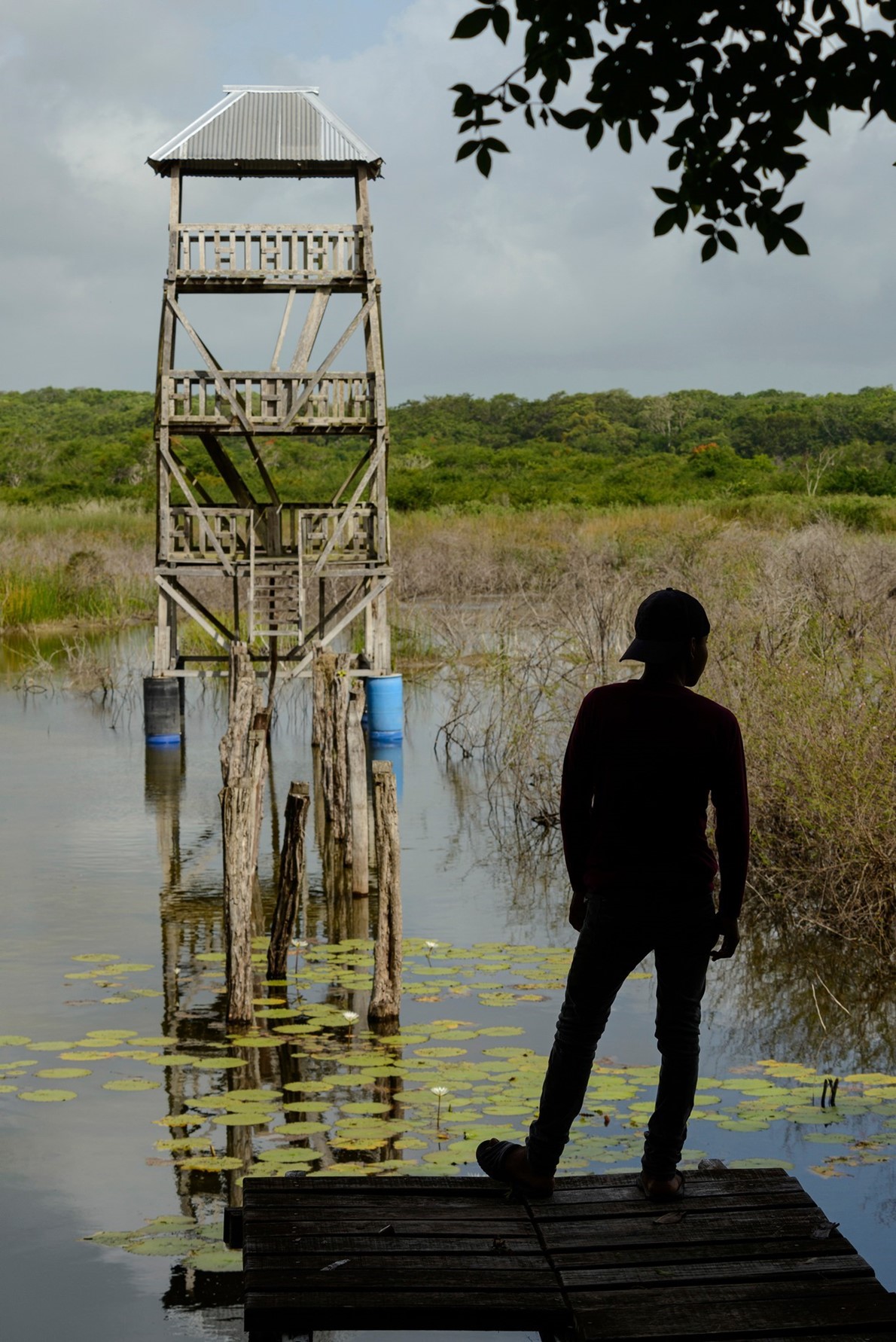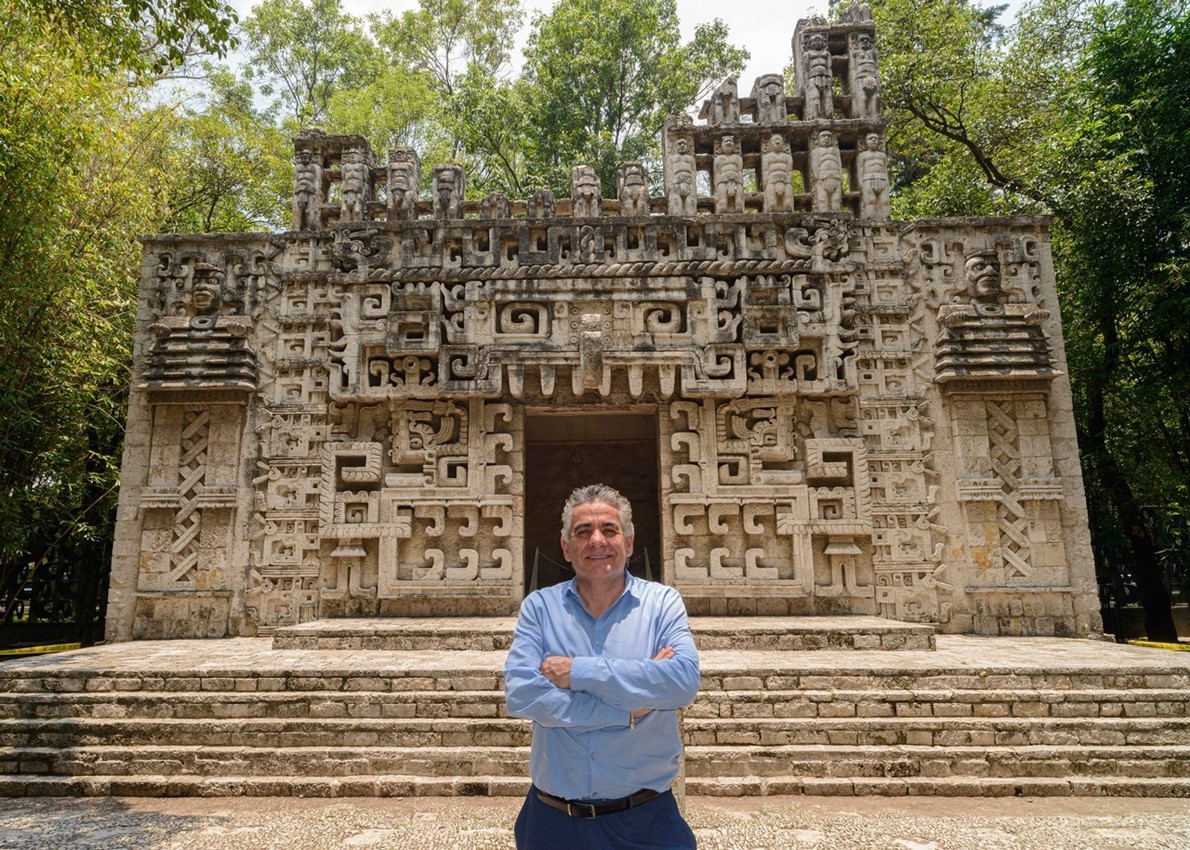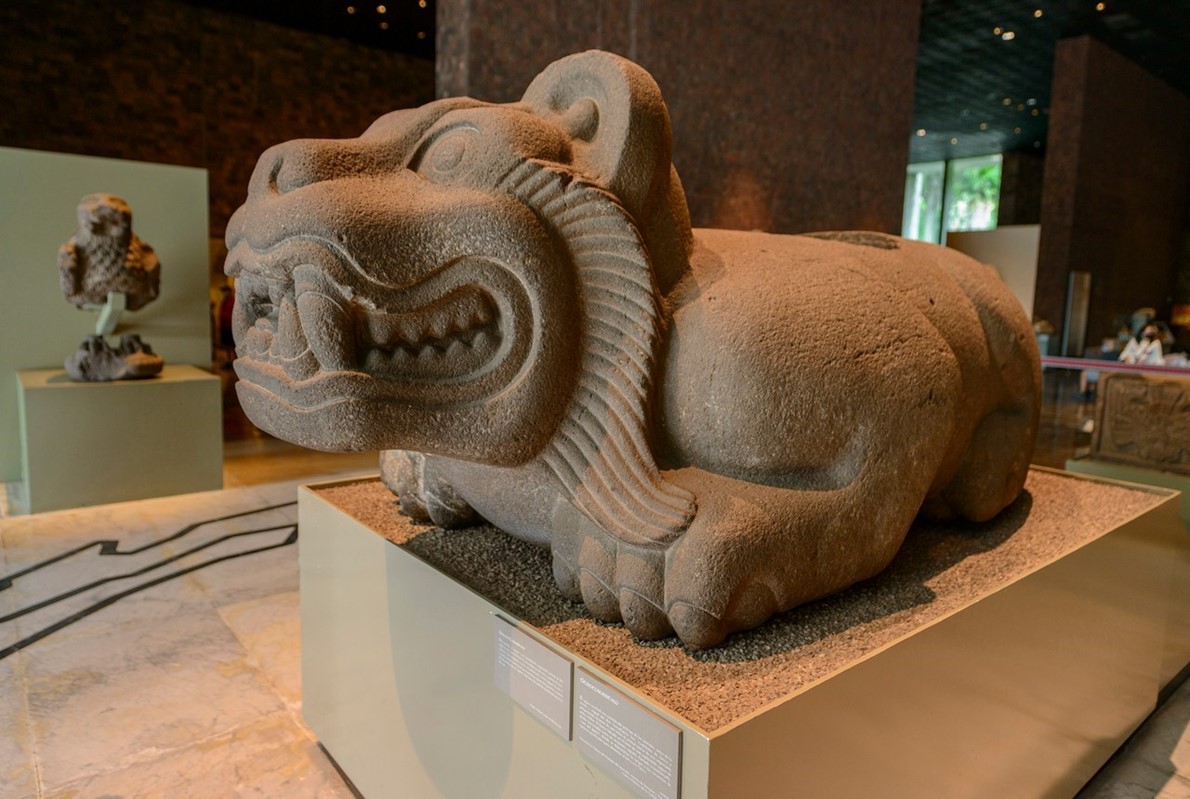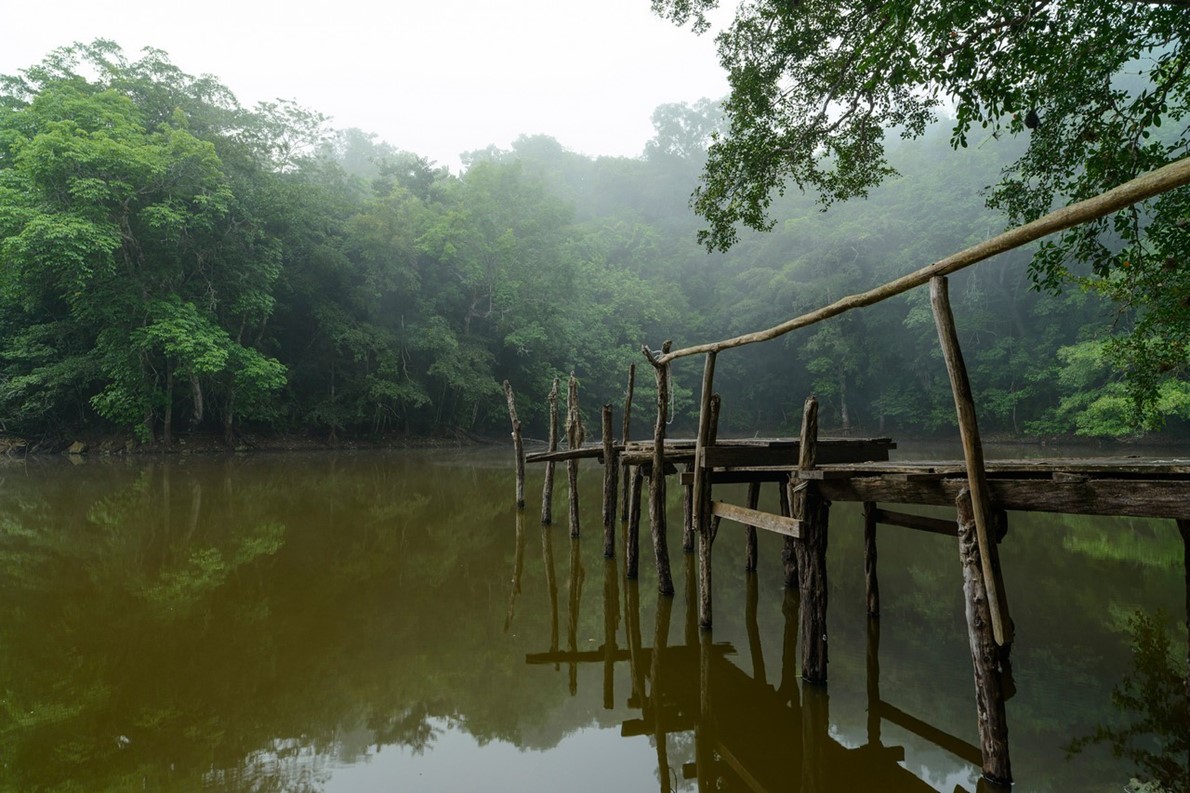The return of the jaguar
Charly Wilder, New York Times
last updated: Nov 17,2022

From
atop the great pyramid of the ancient Maya city of Calakmul in the southern
Yucatán Peninsula in Mexico, you can see all the way to Guatemala. The jungle
stretches out infinitely in every direction, an ocean of green punctuated only
by the stepped pyramid peaks of two other Maya temples.اضافة اعلان
When I was there in March, there were hardly any other visitors. Calakmul was once one of the largest and most powerful cities of the Maya world, but now it stands in ruins, hours from the nearest urban center and enveloped by the Calakmul Biosphere Reserve, one of the biggest swaths of unbroken tropical forest in the Americas.
It was early evening, and the black howler monkeys were waking up. From under the forest canopy came their guttural, trash-compactor roar. The black howler is the loudest land animal in the world, one of many endangered species that live here, along with pumas, toucans, spider monkeys, and coati-mundis. The jungle of Calakmul is also home to the highest concentration of jaguars in Mexico.

The jungle campsite Valentín Natural, an eco-tourism project at the Calakmul Biosphere Reserve, Yucatan, Mexico, on July 19, 2022.
Jaguars are elusive animals that, if threatened, can lacerate a skull with a single bite. Even highly skilled trackers need days or weeks to find jaguars in the wild, and I knew it was unlikely I would see one. The main goal of my trip to Calakmul was to explore the habitat where the jaguar was newly thriving, to get a better understanding of its significance and the environmental pressures it is facing, and to talk to some of the players behind efforts to save it.
Still, I stared down into the vegetation, hoping for a flicker of the great jungle cat that has enthralled this part of the world for thousands of years.
Worshipped as a deity
The Maya, like other ancient civilizations of Mexico, worshipped the jaguar, believing it ruled the underworld and could move between worlds at will. Jaguar images appear on pre-Columbian masks, thrones, reliefs, and sculptures. Rulers and warriors adorned themselves with jaguar skulls, skins, fangs, and claws. For 3,000 years, no animal was more symbolically important.
When archaeologists excavated Calakmul in the early 20th century, they uncovered the tomb of its greatest ruler, known as Jaguar Claw. Nearby settlements have temples devoted to the jaguar, whose range once stretched across the Americas, from present-day Maryland to the Pacific Northwest to the tip of South America.

Gerardo Ceballos, an ecologist and conservationist, at the Museo Nacional de Antropología in Mexico City, on July 22, 2022.
Hunting, deforestation, and urban expansion have reduced that range to less than half of what it was, and jaguar populations have long been in decline. But in Mexico, an alliance of ecologists, nongovernmental organizations, and local communities have embarked on an ambitious conservation project that has effectively pulled the species back from the brink — part of a broader mission to save the jungles of the Yucatán. The number of jaguars in Mexico is now growing, increasing to 4,766 animals in 2018 from 4,025 in 2010, a sign that conservation strategies are working.
“The jaguar is an umbrella species, so by protecting the jaguar, you are protecting everything else,” said Gerardo Ceballos, an ecologist and a conservationist who has worked with jaguars in the region for years.

An ancient jaguar sculpture at the Museo Nacional de Antropología in Mexico City, on July 22, 2022.
In 2005, Ceballos founded the Mexican Alliance for Jaguar Conservation, based in Mexico City, and has conducted comprehensive studies of the species, taking samples of fur, dung, and parasites and tracking the animal with camera traps and GPS collars. The alliance then uses those findings to develop conservation strategies.
As a new train line that will bisect the biosphere reserve approaches completion, the alliance’s work is even more important. The 1,525km Tren Maya will travel northeast from Chiapas toward Cancún, carrying tourists from resorts on the Caribbean coast to archaeological sites inland. The project’s opponents cite environmental damage and unlawful evictions, among other concerns; they gained a temporary injunction in 2020, but in late 2021 the Mexican government resumed construction.
Once news broke that the jaguar population was increasing, the government agreed to route the train line according to conservation needs, adding numerous wildlife passes. It also tentatively agreed to expand the Calakmul Biosphere Reserve beyond its 726,000 hectares, connecting it with other reserves in the area. If the government stays true to its word, “we will end up with 1.3 million hectares of protected forest,” Ceballos said. “It will be one of the largest in the tropics of the world.”
An alternative vision
Even though there are still more jaguars on the Yucatán Peninsula than anywhere else in the country, it is the only region in Mexico where the animal’s range has diminished — in part because of the growth of the so-called Riviera Maya, a string of heavily developed beach towns that snakes down the Caribbean coast from Playa del Carmen to Tulum. Anyone who has recently visited Cancún’s receding shoreline or Tulum’s beach road crammed with air-conditioned hotels running on diesel generators knows of the ecological devastation that development has wrought.
“Twenty years ago, this area was thick jungle,” Heliot Zarza Villanueva, an ecologist who is working with Ceballos on the jaguar project, said as we drove the next day into the state of Campeche toward Calakmul. “They cut down all the trees, destroyed the soil with chemicals, and turned it into this barren grassland.”

A spider monkey swings through the branches of a tree in the Calakmul Biosphere Reserve, Yucatan, Mexico, on July 18, 2022.
As we passed vast fields of sugar cane, sorghum, and soybean — crops not endemic to the region that are used to make biofuel — Villanueva explained that many troubles in the Yucatán date to the Cardenista land reforms of the 1930s, when the post-revolutionary Mexican government offered land to people who came from other parts of the country to farm it, often expropriating it from the Maya.
A big part of the Jaguar Alliance’s conservation work has been orchestrating deals between the government and local farming communities called ejidos. Many Calakmul ejidos are now shifting from ranching, agriculture, and illegal logging to conservation work, including community forest management and the sustainable cultivation of organic products, like the nutrient-rich Ramón nut and silky Melipona honey.
The jungle thickened as we drove deeper into Calakmul, stopping at the sites of two new eco-tourism projects within the reserve: Valentín Natural, a jungle campsite visited by monkeys, pumas and the occasional jaguar, and Casa Ka’an, a cluster of private guesthouses equipped with solar panels, solar water heaters and biodigesters for wastewater treatment. These low-impact, ejido-run accommodations offer an alternative vision of Yucatán tourism.

The jaguar research base at Laguna Om in Yucatán, Mexico, on July 20, 2022.
“There are around 800 jaguars in the area,” Villanueva said. “This habitat is very important for so many species.”
We spent the waning daylight hours exploring the surrounding wilderness, our ears and eyes peeled for any sign of feline life. Eventually, we made our way out of the archaeological zone, stopping in the village of Xpujil for tacos and margaritas at Sazón Veracruzano, one of many decent roadside restaurants within the biosphere reserve.
After dinner, we headed to the base camp where the Jaguar Alliance undertakes its research, a cluster of palapa huts around a small lake within the reserve. It was dark when we arrived, but the jungle seemed to be just waking up. The air seethed with the sounds of cicadas, frogs, owls, and countless other nocturnal creatures. I retreated to a hut and, after chasing off a large black tarantula that had sneaked inside and taken up residence above my bed, I let the tropical drone of Calakmul carry me off to sleep.
‘I didn’t realize I was doing damage’
I woke at dawn to meet with the members of the Jaguar Alliance in a hut at the edge of the lake. They track jaguars several times a year, using a tranquilizer gun to sedate the animal so they can take blood and attach a collar. Their crew includes ecologists, a veterinarian, a pack of hounds, a dog trainer, and the well-known jaguar hunter Don Pancho, who joined the conservation project two years ago.
Don Pancho shot his first jaguar when he was 14 to protect the livestock on his parents’ subsistence farm. Local farmers hired him, paying him with cows, pigs, and goats.
Eventually, Don Pancho started leading hunts for wealthy foreigners through the Safari Club International, he said, mostly Americans working for the chewing gum companies that would come to Calakmul to harvest chicle from the jungle. “I used to get a $1,000 tip for a hunt — that’s just the tip,” said Don Pancho, adding that he stopped hunting jaguars after the practice was outlawed in 1987.
“I didn’t realize I was doing damage,” he said.
In the end, I never did see a jaguar, but the jungle got under my skin. The air was hot and alive with buzzing insects and tropical birds. Troops of spider monkeys swung through the branches above me. Gnarled strangler figs twisted up toward the sky. When you’re inside the jungle, it feels endless. But every year it shrinks.
“In the last 20 years, we lost 1.8 million hectares of forest,” said Ceballos, who was a lead author of a seminal 2015 study on what is known as the sixth mass extinction. For him, the jaguar program is part of a broader project — to save Mexico’s rich jungle ecosystem before it’s too late.
“We don’t have the luxury of 20 years or more,” he said. “What we do in the next four or five years, what we save, is what will be saved in the long run.”
Read more Travel
Jordan News
When I was there in March, there were hardly any other visitors. Calakmul was once one of the largest and most powerful cities of the Maya world, but now it stands in ruins, hours from the nearest urban center and enveloped by the Calakmul Biosphere Reserve, one of the biggest swaths of unbroken tropical forest in the Americas.
It was early evening, and the black howler monkeys were waking up. From under the forest canopy came their guttural, trash-compactor roar. The black howler is the loudest land animal in the world, one of many endangered species that live here, along with pumas, toucans, spider monkeys, and coati-mundis. The jungle of Calakmul is also home to the highest concentration of jaguars in Mexico.

The jungle campsite Valentín Natural, an eco-tourism project at the Calakmul Biosphere Reserve, Yucatan, Mexico, on July 19, 2022.
Jaguars are elusive animals that, if threatened, can lacerate a skull with a single bite. Even highly skilled trackers need days or weeks to find jaguars in the wild, and I knew it was unlikely I would see one. The main goal of my trip to Calakmul was to explore the habitat where the jaguar was newly thriving, to get a better understanding of its significance and the environmental pressures it is facing, and to talk to some of the players behind efforts to save it.
Still, I stared down into the vegetation, hoping for a flicker of the great jungle cat that has enthralled this part of the world for thousands of years.
Worshipped as a deity
The Maya, like other ancient civilizations of Mexico, worshipped the jaguar, believing it ruled the underworld and could move between worlds at will. Jaguar images appear on pre-Columbian masks, thrones, reliefs, and sculptures. Rulers and warriors adorned themselves with jaguar skulls, skins, fangs, and claws. For 3,000 years, no animal was more symbolically important.
When archaeologists excavated Calakmul in the early 20th century, they uncovered the tomb of its greatest ruler, known as Jaguar Claw. Nearby settlements have temples devoted to the jaguar, whose range once stretched across the Americas, from present-day Maryland to the Pacific Northwest to the tip of South America.

Gerardo Ceballos, an ecologist and conservationist, at the Museo Nacional de Antropología in Mexico City, on July 22, 2022.
Hunting, deforestation, and urban expansion have reduced that range to less than half of what it was, and jaguar populations have long been in decline. But in Mexico, an alliance of ecologists, nongovernmental organizations, and local communities have embarked on an ambitious conservation project that has effectively pulled the species back from the brink — part of a broader mission to save the jungles of the Yucatán. The number of jaguars in Mexico is now growing, increasing to 4,766 animals in 2018 from 4,025 in 2010, a sign that conservation strategies are working.
“The jaguar is an umbrella species, so by protecting the jaguar, you are protecting everything else,” said Gerardo Ceballos, an ecologist and a conservationist who has worked with jaguars in the region for years.

An ancient jaguar sculpture at the Museo Nacional de Antropología in Mexico City, on July 22, 2022.
In 2005, Ceballos founded the Mexican Alliance for Jaguar Conservation, based in Mexico City, and has conducted comprehensive studies of the species, taking samples of fur, dung, and parasites and tracking the animal with camera traps and GPS collars. The alliance then uses those findings to develop conservation strategies.
As a new train line that will bisect the biosphere reserve approaches completion, the alliance’s work is even more important. The 1,525km Tren Maya will travel northeast from Chiapas toward Cancún, carrying tourists from resorts on the Caribbean coast to archaeological sites inland. The project’s opponents cite environmental damage and unlawful evictions, among other concerns; they gained a temporary injunction in 2020, but in late 2021 the Mexican government resumed construction.
Once news broke that the jaguar population was increasing, the government agreed to route the train line according to conservation needs, adding numerous wildlife passes. It also tentatively agreed to expand the Calakmul Biosphere Reserve beyond its 726,000 hectares, connecting it with other reserves in the area. If the government stays true to its word, “we will end up with 1.3 million hectares of protected forest,” Ceballos said. “It will be one of the largest in the tropics of the world.”
An alternative vision
Even though there are still more jaguars on the Yucatán Peninsula than anywhere else in the country, it is the only region in Mexico where the animal’s range has diminished — in part because of the growth of the so-called Riviera Maya, a string of heavily developed beach towns that snakes down the Caribbean coast from Playa del Carmen to Tulum. Anyone who has recently visited Cancún’s receding shoreline or Tulum’s beach road crammed with air-conditioned hotels running on diesel generators knows of the ecological devastation that development has wrought.
“Twenty years ago, this area was thick jungle,” Heliot Zarza Villanueva, an ecologist who is working with Ceballos on the jaguar project, said as we drove the next day into the state of Campeche toward Calakmul. “They cut down all the trees, destroyed the soil with chemicals, and turned it into this barren grassland.”

A spider monkey swings through the branches of a tree in the Calakmul Biosphere Reserve, Yucatan, Mexico, on July 18, 2022.
As we passed vast fields of sugar cane, sorghum, and soybean — crops not endemic to the region that are used to make biofuel — Villanueva explained that many troubles in the Yucatán date to the Cardenista land reforms of the 1930s, when the post-revolutionary Mexican government offered land to people who came from other parts of the country to farm it, often expropriating it from the Maya.
A big part of the Jaguar Alliance’s conservation work has been orchestrating deals between the government and local farming communities called ejidos. Many Calakmul ejidos are now shifting from ranching, agriculture, and illegal logging to conservation work, including community forest management and the sustainable cultivation of organic products, like the nutrient-rich Ramón nut and silky Melipona honey.
The jungle thickened as we drove deeper into Calakmul, stopping at the sites of two new eco-tourism projects within the reserve: Valentín Natural, a jungle campsite visited by monkeys, pumas and the occasional jaguar, and Casa Ka’an, a cluster of private guesthouses equipped with solar panels, solar water heaters and biodigesters for wastewater treatment. These low-impact, ejido-run accommodations offer an alternative vision of Yucatán tourism.

The jaguar research base at Laguna Om in Yucatán, Mexico, on July 20, 2022.
“There are around 800 jaguars in the area,” Villanueva said. “This habitat is very important for so many species.”
We spent the waning daylight hours exploring the surrounding wilderness, our ears and eyes peeled for any sign of feline life. Eventually, we made our way out of the archaeological zone, stopping in the village of Xpujil for tacos and margaritas at Sazón Veracruzano, one of many decent roadside restaurants within the biosphere reserve.
After dinner, we headed to the base camp where the Jaguar Alliance undertakes its research, a cluster of palapa huts around a small lake within the reserve. It was dark when we arrived, but the jungle seemed to be just waking up. The air seethed with the sounds of cicadas, frogs, owls, and countless other nocturnal creatures. I retreated to a hut and, after chasing off a large black tarantula that had sneaked inside and taken up residence above my bed, I let the tropical drone of Calakmul carry me off to sleep.
‘I didn’t realize I was doing damage’
I woke at dawn to meet with the members of the Jaguar Alliance in a hut at the edge of the lake. They track jaguars several times a year, using a tranquilizer gun to sedate the animal so they can take blood and attach a collar. Their crew includes ecologists, a veterinarian, a pack of hounds, a dog trainer, and the well-known jaguar hunter Don Pancho, who joined the conservation project two years ago.
Don Pancho shot his first jaguar when he was 14 to protect the livestock on his parents’ subsistence farm. Local farmers hired him, paying him with cows, pigs, and goats.
Eventually, Don Pancho started leading hunts for wealthy foreigners through the Safari Club International, he said, mostly Americans working for the chewing gum companies that would come to Calakmul to harvest chicle from the jungle. “I used to get a $1,000 tip for a hunt — that’s just the tip,” said Don Pancho, adding that he stopped hunting jaguars after the practice was outlawed in 1987.
“I didn’t realize I was doing damage,” he said.
In the end, I never did see a jaguar, but the jungle got under my skin. The air was hot and alive with buzzing insects and tropical birds. Troops of spider monkeys swung through the branches above me. Gnarled strangler figs twisted up toward the sky. When you’re inside the jungle, it feels endless. But every year it shrinks.
“In the last 20 years, we lost 1.8 million hectares of forest,” said Ceballos, who was a lead author of a seminal 2015 study on what is known as the sixth mass extinction. For him, the jaguar program is part of a broader project — to save Mexico’s rich jungle ecosystem before it’s too late.
“We don’t have the luxury of 20 years or more,” he said. “What we do in the next four or five years, what we save, is what will be saved in the long run.”
Read more Travel
Jordan News

